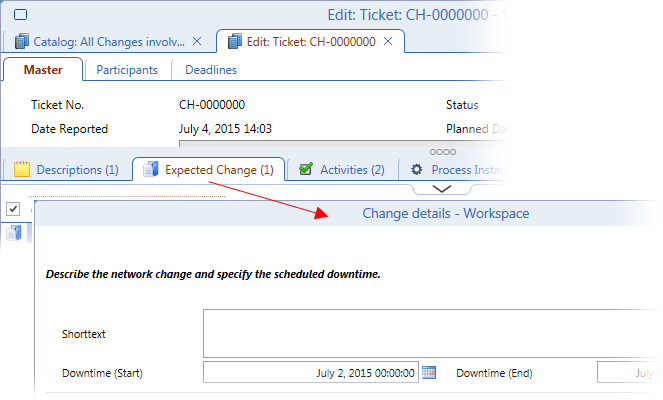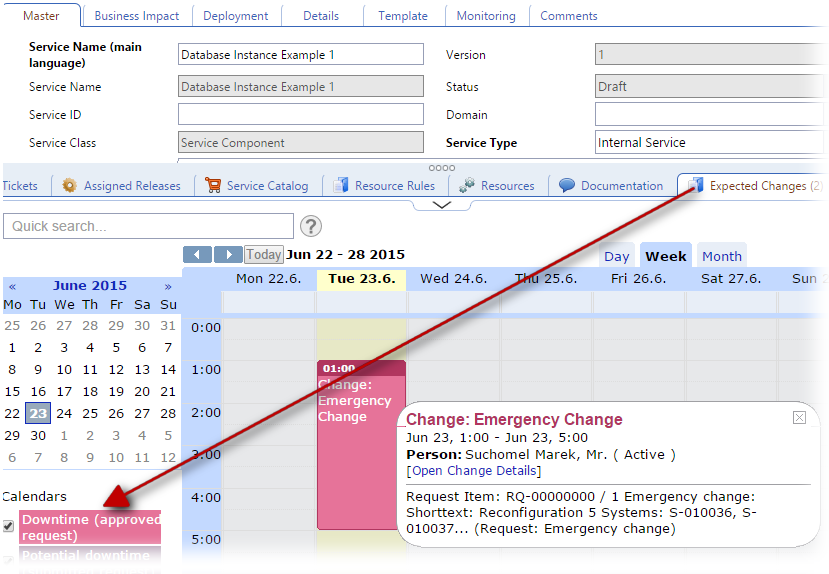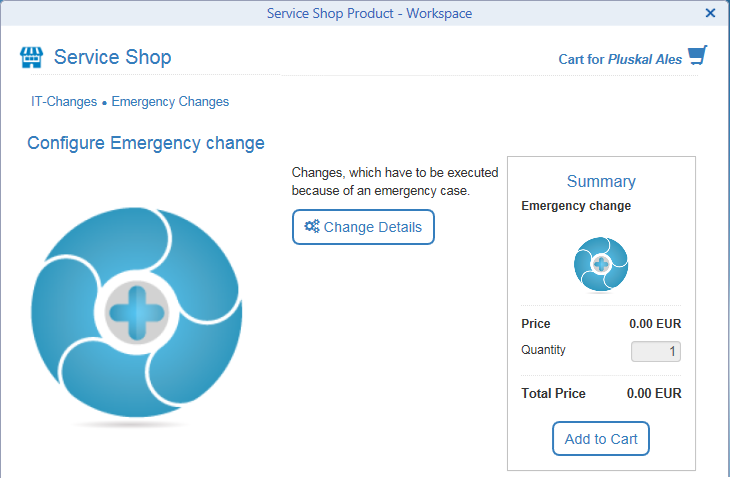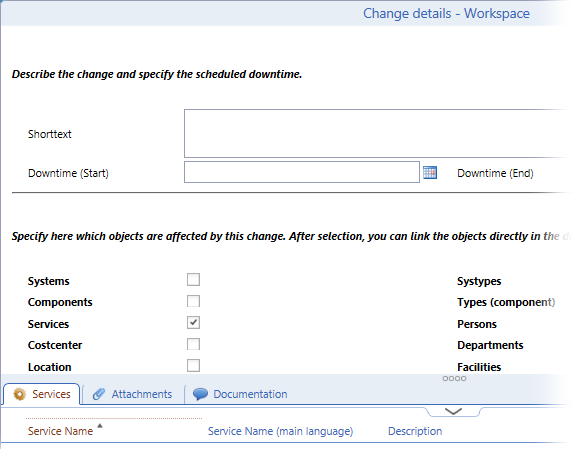Service Outage
Changes to IT infrastructure will inevitably cause performance downtimes. Expected downtime incurred by an infrastructure change is registered in the corresponding Change Details object.
This is captured in the corresponding Change Detail objects found in the 'Expected Changes' tab of the Change editor.

Outages registered in changes linked to a particular service are considered Service Outages of that service, also referred to as expected service downtimes.
In the Service editor, a calendar of downtimes requested in connection with the service can be displayed in the 'Expected Changes' tab switched to the calendar mode.

Calendar events are based on the Service Shop requests containing change details with downtime. Approved downtimes are rendered in different color than downtimes which are submitted but not approved yet.
Requesting a downtime
- Open the Service Request Shop and navigate to the IT-Changes area
- Select 'Emergency change'.
- After selecting the change, click the 'Change Details' button.

- In the Change Details editor, specify Downtime Start and End. Select the 'Services' check box in the middle part of the editor, then use the 'Search and Assign' action in the 'Services' tab to specify which service instances will be affected by the change.

- Add the change to cart and submit the request.